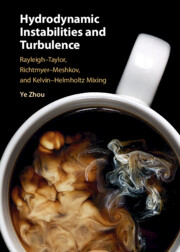 Hydrodynamic Instabilities and Turbulence
Hydrodynamic Instabilities and Turbulence from Part 3 - From the Microscopic to Cosmic Scales
This chapter will provide a detailed presentation of the basic structure of the supernova and its core collapse process to illustrate the roles that RMI, RTI, and KHI play in the different stages of these processes. During the explosions, the shockwave passing through the onion-like supernova core will generate both RMI and RTI. The RTI is the key physical process creating the filament structures observed in the Crab Nebula. MHD RT instabilities will be presented to show how they can further improve the comparison between simulations and observations. Several additional applications where hydrodynamic instability plays an important role will also be examined. Geophysics and solar physics also present effective lenses to view the importance of hydrodynamic instabilities. In the case of solar physics, I will describe how RTI’s impact can be viewed through various phenomena, such as the plumes that rise from low density bubbles as well as eruptions that occur as material returns to the solar surface. Once again, MHD RT instabilities are relevant.
To save this book to your Kindle, first ensure [email protected] is added to your Approved Personal Document E-mail List under your Personal Document Settings on the Manage Your Content and Devices page of your Amazon account. Then enter the ‘name’ part of your Kindle email address below. Find out more about saving to your Kindle.
Note you can select to save to either the @free.kindle.com or @kindle.com variations. ‘@free.kindle.com’ emails are free but can only be saved to your device when it is connected to wi-fi. ‘@kindle.com’ emails can be delivered even when you are not connected to wi-fi, but note that service fees apply.
Find out more about the Kindle Personal Document Service.
To save content items to your account, please confirm that you agree to abide by our usage policies. If this is the first time you use this feature, you will be asked to authorise Cambridge Core to connect with your account. Find out more about saving content to Dropbox.
To save content items to your account, please confirm that you agree to abide by our usage policies. If this is the first time you use this feature, you will be asked to authorise Cambridge Core to connect with your account. Find out more about saving content to Google Drive.